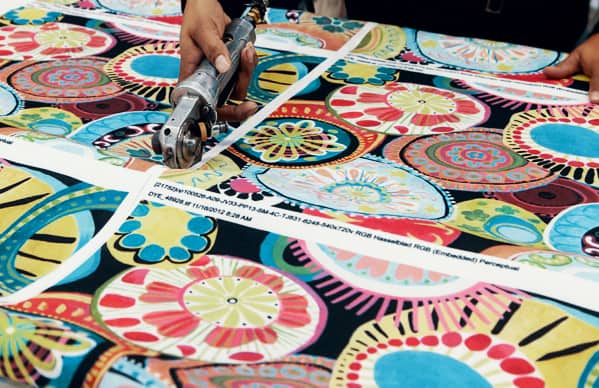What is cut and sew?
Cut and sew is a new name given to a very old practice. It is a design process where you print a garment before it is manufactured instead of the other way around. Typically, brands and designers order t-shirts from wholesalers and then print their design on them. But what if the design has some limitations? Cut and sew allows you to have more control over the creative process. This kind of practice opens up new possibilities that are not possible with traditional production.
How does cut and sew work?
Making a factory-produced garment takes a lot of work. You need to go through several steps for the completion of each project. The carefully planned pre-production process will lead to a garment that will fit well and looks great. Remember, there are no shortcuts in creating quality garments.
Here are the steps involved in the cut and sew:
Step 1
The first thing you need is a sketch of the garment to create a spec sheet. A spec sheet often contains basic manufacturing information like measurements and a flat sketch. Essentially, the sheet works like a pattern maker to give an idea of the design.
Step 2
Next comes the paper pattern. You need a professional to do this unless you have appropriate training. The paper pattern can be the most critical part of the pre-production process. This is where you should get the measurements and little details correct.
Step 3
When the pattern is complete, you can create a garment sample and then fit it on a model. The fit on a model part tells you a lot about how the garment will look like on a customer of a particular size. You will go over the trim of the entire garment and fix any flaws before the design goes into production.
Step 4
If you are lucky, there will be one fitting, but there are a couple of fittings in most cases. Every time you adjust the fit, you also adjust the pattern and sample. Repeat this process every time before you decide on a final product. The founder of Under Armour made 400 samples before he decided to lock a sample for his first t-shirt. You may not have to go that far, but 2-3 revisions are completely normal and necessary.

What are the advantages of cut and sew?
Here are the key benefits of cut and sew in fabric design:
No print limitation
As mentioned before, cut and sew allows more creative control. Normally, when you are printing garments, you are restricted to a very specific size, usually an A4. Some go a bit bigger or smaller than this, but this is the creative limit. Cut and sew, a lot like all-over print, allows you to print an entire fabric or garment from top to bottom.
More control over the quality
There are always some elements that you cannot control when working with a wholesale garment manufacturer. Small examples include the quality of hems, collars, and even the label. Some might consider these small details, but others can consider this as a make-or-break point. Wholesale brands create garments with tearaway labels but with cut and sew, you choose to place the label where you wish. This element adds more flexibility and opens up a world of possibilities.
Cut and sew vs. sublimation
The printing advantages of cut and sew seem a lot like sublimation at first glance. After all, both processes require printing a garment, but there are some differences between both. Firstly, sublimation is unable to cover the entire garment. There will be small areas left behind, especially under the armpits and around the collar. The ink cannot reach these difficult areas and leaves small, white patches.
Secondly, sublimation only works with garments made of 100% polyester. On the other hand, with cut and sew, you can work with any fabric as long as it goes well with the printing technique. Prices are also very different for both processes. Sublimation is mostly cheaper, but it also depends on quantities and whether you order bulk or print on demand.
Cut and sew best practices
If you want to add cut and sew to your range of services, you should follow these best practices.
Be transparent about shipping
It does not matter how complex a design is. You should be able to get a sample garment in a week. Producing entire orders can take up to four weeks, but a sample is a good marker of how you work. You should also inform your customers about shipping times and the expected arrival of their orders from the date of placing an order.
Provide good quality customer service
This business is built around the needs of the customer. You should aim to provide the best customer service possible to each client and query. There may be a language barrier when working with overseas orders, but this should not stop you from delivering your best. In the case of a global network, you should have customer service representatives that work in the same time zone and speak the same language to cater to the customer.
Price it right
Your cut and sew facility will be based in one location. This means that the final product will be priced accordingly. Make sure that your facility is based in a location where production is cheaper and communication is never a hassle.
Cut and sew: never compromise on quality
Quality is the non-negotiable part of this field of work. All materials in your cut and sew orders should come from the hands of professionals and manufacturers who are highly skilled. Otherwise, people will not order from you. Overseas manufacturing is lowly priced, and if you have an in-house customer service team, you can work with ease.